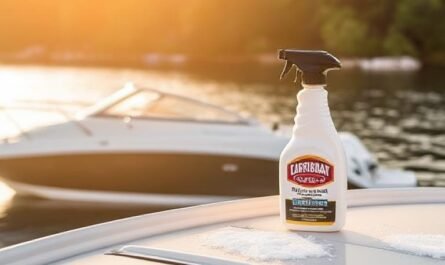How to Stay Safe While Boating in Severe Weather Conditions
Imagine a perfect day out on the water — the sun is shining, the wind is just right, and the waves are calm. But weather can change fast, and when a peaceful ride turns dangerous, you need to be prepared. Boating during severe weather isn’t just scary, it’s risky. Knowing how to avoid storms and what to do if one hits can make all the difference.
In this guide, we’ll break down how to stay safe while boating in bad weather, what signs to look for, and how to handle a storm if you’re caught in one. Because let’s face it — anything can happen out on the open water.
Why Is Weather So Important for Boaters?
Weather isn’t just a background detail when you’re on a boat — it’s the main character. While a bit of wind or light rain might not seem like a big deal on land, out on the water, it can cause rough seas, low visibility, and even life-threatening situations.
Even if your boat is in top condition and you’re an experienced captain, weather takes no prisoners. So let’s start with one big rule:
Always check the weather before heading out.
Use your favorite weather app, NOAA marine forecasts, or a VHF marine radio to find accurate updates. And don’t just check it once — weather at sea can shift within minutes.
How to Spot Bad Weather Before It Hits
No one wants to get caught in a storm, but the good news is, the signs are usually there — if you know what to look for.
Here are a few early warning signs:
- Dark clouds building on the horizon, especially thick, puffy cumulonimbus clouds
- A noticeable drop in temperature — weather systems often bring cold fronts
- Sudden changes in wind direction or speed
- Choppy water or “whitecap” waves, signaling increased wind speed
- Lightning or distant thunder
Experienced boaters often say, “If it looks bad, it probably is.” Trust your instincts. Don’t wait until the storm is overhead before turning around or finding shelter.
Steps to Take Before You Leave the Dock
Preparing for the worst helps you stay safe — even if bad weather never shows up.
Here’s what to do before you embark:
- Create a float plan: Let someone on land know your route and return time.
- Check your safety gear: Make sure you have life jackets for everyone on board, a working radio, flares, and a first-aid kit.
- Know your radio channels: Channel 16 is the emergency and calling channel for the Coast Guard.
- Review boating laws: Especially those related to operating in bad weather.
- Pack extra supplies: Water, food, dry clothes — they could come in handy if you’re delayed.
Think of it like packing an umbrella when the forecast says “chance of rain.” You might not need it, but you’ll be glad you have it if the skies open up.
What to Do If You’re Caught in a Storm While Boating
Sometimes the weather turns before you can get back to shore. Don’t panic — it’s all about staying calm and following safety steps.
Here are key things to do:
- Put on life jackets if you haven’t already.
- Slow down, but don’t stop — maintain maneuverability.
- Point the boat’s bow into the waves at a 45-degree angle. This improves stability and reduces the chance of capsizing.
- Close all hatches and windows to prevent water from getting in.
- Keep the bilge pump running (or turn on an automatic one) to remove any accumulating water.
- Turn off extra electronics to avoid overload or lightning damage.
Lightning storms are particularly dangerous. You can reduce your risk by keeping metal objects stowed and staying away from electrical panels.
Should You Head to Shore or Ride It Out?
Deciding whether to return to shore or ride out a storm on the water depends on your location, the storm’s speed, and how far you are from refuge.
If you’re close to a marina or protected bay, head back immediately. But if the storm is already near, it might be safer to stay put, manage your position, and wait it out.
A good rule of thumb? Don’t outrun a storm — outlast it smartly.
What If the Worst Happens?
No one wants to think about capsizing or engine failure. But it’s better to have a plan than to panic when every second counts.
Here’s what you should remember:
- Stay with the boat — it’s easier to spot from the air and provides flotation.
- Use visual distress signals like flares or orange flags.
- Turn on your distress beacon if you have one (like an EPIRB).
- Keep everyone calm and together — hypothermia and panic are real dangers.
Think of your boat as your best chance of rescue. Even if it’s partially submerged, boats float longer than people do.
Safety Never Takes a Day Off
Boating is one of life’s great joys — but it comes with responsibility. Sudden storms can turn a fun day into a dangerous one, fast. By staying alert, preparing ahead of time, and knowing what steps to take when things go wrong, you can stay safe out there.
Before you untie that dock line, ask yourself: Am I ready for whatever the weather throws at me today?
Because being a responsible boater isn’t just about steering a ship — it’s about steering clear of danger too.







